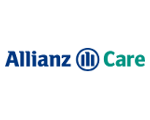There are three classes of medical treatment: primary (general practice, from coughs to immunisations), secondary, and tertiary (illnesses that require long term hospitalisation or rehabilitation).
Most private hospitals only have primary and secondary medical services. The government-run healthcare centres cover all three types, and some hospitals only specialise in tertiary care for chronic conditions. Many of these hospitals are also attached to universities and double up as teaching hospitals, like Queen Mary in Pok Fu Lam and Prince Philip Dental Hospital in Sai Ying Pun.
Public hospitals
Public hospitals are run by the Hong Kong Hospital Authority. Its website www.ha.org.hk lists many useful hotlines for advice on various health issues. The Authority’s 24 hour information line is 2882 4866. If you need to find out which hospital is best for a particular case, call them. Most public hospitals have Accident & Emergency (A&E) Services, but check before you go.
Most treatments in public hospitals are heavily subsidised to make them affordable for people who cannot afford good healthcare, are retired or too ill to earn an income. Besides these subsidies, some expats use public hospitals because of their levels of service and excellent quality treatment. Others complain about communication problems, bad food and long waits for out-patient service and appointment times. If you require follow-up treatment, you are unlikely to see the same doctor when you return. In summary, medical standards are high, but public hospitals are run for maximum efficiency, so you will only get the minimum of personal service.
To receive a subsidized treatment at one of the government hospitals you must have a Hong Kong identity card. In some cases you will have to wait for more than an hour. Consultation costs about HK$100 for a specialist and about HK$60 for general consultation, plus any follow up tests or medicines. Government hospitals in Hong Kong only accept cash, so make sure you bring some with you when you visit.
If you don’t have a local identity card, you can use government hospitals by paying private market rates. Many private health insurances will reimburse these fees. As a private patient you will pay higher fees than the subsidized rate: for example the cost for an emergency visit can be HK$100 if you have a local identity card, but may be more than HK$500 if you do not have one.
In some specialised hospitals, you are expected to come with a doctor’s referral. Sometimes doctors will refer you to a government hospital if you need a special test or treatment which is only available there.
Private hospitals
There are about a dozen private hospitals in Hong Kong which provide mainly primary healthcare. The Department of Health’s website (www.info.gov.hk/dh/ ) lists registered private hospitals and institutions. Some are located in Kowloon and in New Territories but most are on Hong Kong Island.
Consultation fees in private hospitals do not include drugs, treatment, investigation, tests and procedures. You can pay by cheque, credit card or by presenting an accepted health insurance card. All hospitals are easily accessible by public transport and some have shuttles going back and forth from ferry piers, train stations and the MTR stations. Make an appointment in advance; many hospitals are busy and unless you are classed as an emergency, you can’t walk in and expect service, unless you are prepared to wait.




